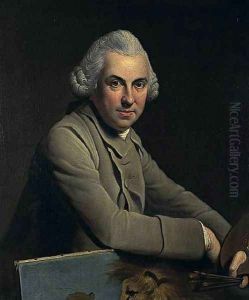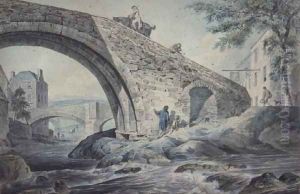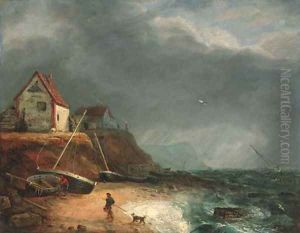Charles, I Catton Paintings
Charles Catton the elder was an English artist born in 1728 in Norwich, England. He was a prominent figure in the 18th-century British art scene, known for his versatility as a painter, illustrator, and scenic designer. His early life was characterized by an immersion in the artistic traditions of Norwich, a city with a rich cultural heritage that greatly influenced his development as an artist. Catton was apprenticed to a London coach painter, which provided him with a solid foundation in the practical aspects of painting and design. This experience was pivotal in shaping his career, as it introduced him to a wide range of decorative techniques and styles.
Catton's work spanned various genres, including landscape painting, animal studies, and heraldic art. He was particularly admired for his ability to capture the English countryside with a sensitivity to light and atmosphere, which was innovative for his time. His animal paintings, often featuring domestic and wild animals in naturalistic settings, were celebrated for their accuracy and vitality. This interest in natural history was a reflection of the Enlightenment's growing curiosity about the natural world and its underlying systems.
In 1760, Catton became one of the founder members of the Royal Academy of Arts, an institution established to promote the arts in Britain through education and exhibitions. His involvement with the Royal Academy underscored his commitment to the development of art and artists in the country. He served as a librarian to the Academy, contributing to its intellectual and organizational growth during its formative years.
Beyond his contributions to painting and the Royal Academy, Catton was also involved in the theater. He worked as a scenic designer, creating elaborate backdrops for plays and operas. This aspect of his career allowed him to experiment with large-scale compositions and to explore the dynamic interplay of light and shadow, skills that enriched his easel paintings.
Charles Catton the elder passed away in 1798, leaving behind a legacy that was marked by his contributions to the British art world and his role in the early years of the Royal Academy of Arts. His work continues to be studied and admired for its contribution to the development of British landscape and animal painting in the 18th century.


